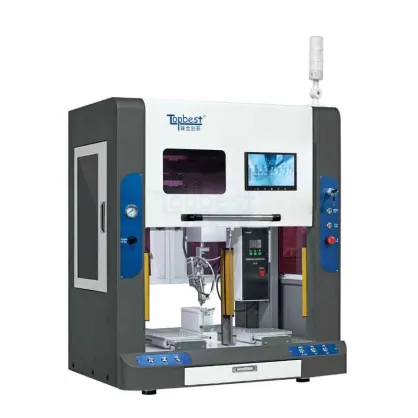- Automobiles & Motorcycles
- Beauty & Personal Care
- Business Services
- Chemicals
- Construction & Real Estate
- Consumer Electronics
- Electrical Equipment & Supplies
- Electronic Components & Supplies
- Energy
- Environment
- Excess Inventory
- Fashion Accessories
- Food & Beverage
- Furniture
- Gifts & Crafts
- Hardware
- Health & Medical
- Home & Garden
- Home Appliances
- Lights & Lighting
- Luggage, Bags & Cases
- Machinery
- Measurement & Analysis Instruments
- Mechanical Parts & Fabrication Services
- Minerals & Metallurgy
- Office & School Supplies
- Packaging & Printing
- Rubber & Plastics
- Security & Protection
- Service Equipment
- Shoes & Accessories
- Sports & Entertainment
- Telecommunications
- Textiles & Leather Products
- Timepieces, Jewelry, Eyewear
- Tools
- Toys & Hobbies
- Transportation
What Robotic Soldering Can Do to Your Electronics Manufacturing Line
The world of electronics manufacturing is a rapidly evolving landscape, with increasing demands for precision, efficiency, and consistency. Robotic soldering has emerged as a game-changer in this industry, offering a myriad of benefits that can significantly enhance the production process. In this article, we will explore the transformative capabilities of robotic soldering and how it can revolutionize your electronics manufacturing line.
Precision and Consistency
One of the primary advantages of employing robotic soldering in your manufacturing line is the unmatched precision and consistency it brings to the soldering process. Unlike human operators, robots are not subject to fatigue, distractions, or variations in skill level. This means that every solder joint is executed with pinpoint accuracy, meeting the strictest quality standards. Consistency is key in electronics manufacturing, as it ensures that every product leaving the assembly line is of the same high quality, minimizing defects and rework.
Efficiency and Speed
Robotic soldering systems are designed to work tirelessly, 24/7, without breaks or downtime. This leads to a significant increase in production efficiency and speed. With the ability to handle complex soldering tasks at a rapid pace, robotic soldering can substantially reduce cycle times and increase output, enabling manufacturers to meet growing demands and stay competitive in the market. This improved efficiency translates to a shorter time-to-market for your products.

Cost Savings
While the initial investment in robotic soldering equipment may seem substantial, it pays off in the long run through cost savings. Robotic systems can perform soldering tasks with minimal waste, as they use precise amounts of solder and generate fewer defects. This reduces material costs and minimizes the need for rework or repairs. Additionally, by automating the soldering process, you can reallocate human labor to other value-added tasks within your manufacturing line, further optimizing your workforce.
Quality Assurance
The reliability and repeatability of robotic soldering not only ensure that every solder joint is precise and consistent but also contribute to enhanced quality assurance. With the use of advanced sensors and vision systems, robotic soldering systems can monitor and inspect solder joints in real-time. This real-time quality control helps detect and rectify defects immediately, reducing the likelihood of defective products reaching the end of the assembly line. Ultimately, this leads to higher customer satisfaction and lower warranty costs.
Versatility
Robotic soldering systems are incredibly versatile and adaptable to various soldering applications. Whether you are working with through-hole components, surface mount devices, or fine-pitch connections, robotic soldering can be configured to handle a wide range of soldering tasks. Moreover, these systems can accommodate different solder alloys, flux types, and soldering profiles, making them suitable for a broad spectrum of electronic components and assemblies.
Worker Safety
Another critical advantage of integrating soldering robotic into your electronics manufacturing line is improved worker safety. Soldering can involve exposure to fumes, hazardous chemicals, and high-temperature conditions. By automating this process, you reduce the risks associated with manual soldering, protecting your employees from potential health hazards. This not only ensures a safer working environment but also contributes to a more motivated and content workforce.
Conclusion
Robotic soldering is not just a technological marvel; it's a strategic investment that can reshape the way you approach electronics manufacturing. Its precision, consistency, efficiency, cost savings, quality assurance, versatility, and improved worker safety make it a valuable asset to any manufacturing line. As the electronics industry continues to evolve, embracing robotic soldering is a decisive step towards staying competitive, meeting customer expectations, and delivering high-quality products that can withstand the test of time. So, if you aim to elevate your electronics manufacturing line to new heights, consider the transformative power of robotic soldering.
If you are interested in sending in a Guest Blogger Submission,welcome to write for us!




Comments
0